恐怖游戏关卡设计原则之规律与预期(上)
本系列文章将深度解析如何在关卡和游戏设计中创造恐惧感。(请点击此处阅读本文下篇)
电影和游戏中常会出现一些让观众/玩家吓得惊声尖叫的一系列规律和场景。这些元素最初还是原创理念,随着时间发展就变成了常见规律了。例如:
*灯光忽闪忽现的暗室。
*废弃的建筑或收容所。
*走廊尽头突然出现一个小女孩,但很快就消失了。
*电话响了,但接电话时对方却没有任何声音,或者只听到急促的呼吸。
*大雾迷漫的环境中,可以听到潜伏在某个角落的怪物发出的声响。
*角色们被滞留在一个被废弃的小镇中。
这种例子数不胜数。
这里的“规律”我指的是已经被过度使用,丧失其原本新意的想法。在上述例子中,有些规律的运用恰到好处,有些则并非如此。有些一开始可能是原创理想,但经过多年的电影和游戏熏陶,我们仍可一下子猜出接下来的剧情。
这些规律的问题在于,我们可以预知将发生什么情况,因为我们此前看过太多类似情景了。我们知道杀手不会在第一次出手时就死亡,他们总会不断回来骚扰主角。我们也知道当主角们分开时,通常意味着生离死别。这正是规律的问题,我们总能料想到结果。
有些运用恰当的规律使用了角色、故事和场景设置。在这方面表现良好的游戏,会在我们认为应该会很恐怖和吓人的地方做得更好。它们还是会制造出恐怖效果,引进新的玩法,体验和恐怖视觉效果。
下图是《生化危机4》中的一帮村民。
这是《F.E.A.R and The Ring》中的幽灵女孩。
《求生之路》引进了合作玩法和受到感染的人群。他们并非丧尸,但就像《惊变28天》一样改写了“僵尸”电影的定义。
《寂静岭》中被废弃的小镇,或者《鬼屋魔影》中闹鬼的屋子。
《生化奇兵》,结合了第一人称射击游戏以及恐怖求生游戏元素,创造了一种令人难忘的场景。
《死刑犯2:充血》,融合了第一人称射击游戏以及恐怖求生游戏元素,并引进了混战格斗元素。游戏中含有足够的熟悉元素,同时又不乏新颖性。《死刑犯2》的关卡设计贯穿着混战格斗元素。
由此可见,规律很重要,它们有助于玩家理解游戏。
规律确实管用。
即便我们知道即将发生什么情况,它也还是能创造一些让我们回应的心理恐慌。这也正是它们被称为规律的原因,因为它们是被证实可行的做法。
所以我们的目标就是认识规律,并对其进行深华。
要了解规律的表现元素及其运行原理。这样你就能预知玩家的反应。了解玩家的预期以及他们可能采取的行动,可以让你为他们带来更多新意。要善于使用规律作为关卡和游戏设计的基础。
但规律本身并不会令人印象深刻,它们很容易被遗忘。它们确实会吓到玩家,但却只是一种小伎俩。只有使用规律并了解玩家对此产生的反应,你才有可能引进新元素。使用规律很简单,但要让玩家记住却很困难。
就像我们都记得《第六感》的结局,但却不记得其他使用相同结尾的电影。
有些规律包含故事元素,场景和特定事件,例如忽明忽暗的灯光,以及在镜中看到自己的身后之物。
你可以将这些规律作为起点,探索和引进吸引玩家融入情景、故事和关卡的新元素。
所以,在此我就总结4点,就是我认为对于创造恐怖感,让玩家在你的关卡设计中感到害怕的4个重要原则。如果使用得当,可以制造出一种令玩家在关卡/游戏结束后仍然心有余悸的情感反应。
这4个元素分别是:
*故事和场景
*关系
*预期和节奏
*道德决定
执行步骤:
在开始观看恐怖和悬疑片时,记录下你所看到的一些常见规律,以及你当时对这些特定事件的反应和预感。了解导演在此的意图是什么,何处会激发人们的心理反就。为何你在电影的紧张时刻会产生当时那种感觉。
总之要多玩恐怖救求生游戏,并研究人的心理,了解人们做某些事情的原因。
预期和节奏
预期和节奏是创造任何单人和多人地图的一个重要环节。这对于创造一款成功的恐怖求生游戏来说更为重要。
节奏指的就是速度。
预期就是对即将发生某事的预感。
节奏和预期可以让设计师知道如何吓到玩家,何时及如何执行设置。这一切都要取决于成功把握节奏,创造针对特定事件或结果的预期。
设计师应逐渐而一丝不苟地创造节奏。就好像上楼一样小小翼翼,一步一个阶梯地走到楼顶。而不是三步并作两步直奔到顶。
当你到达楼梯顶端时,就得开始创造预期,就好像猝不及防地从楼顶跌至楼底。如果你一开始就引入一个杀手或怪物,那就没有多少神秘感,最后就没有什么可以保持节奏,吊足玩家胃口的元素了。
好比是坐过山车。当你在排队等待时,会听到过山车呼啸而过的声音。听到其他人在尖叫,感觉地面在震动。随着你在队伍中往前移,就会看到排在前面的人坐上过山车。队伍越近,你越觉得自己心跳加速。直到你自己坐进车厢时,才发现已经无法回头了。你要被困在这个小小的车厢里。现在你开始慢慢等待自己平静下来,而后过山车首次垂直降落时,你会发现自己在等待中的一切预期全部得到验证。
如果所有等待的结果令人失望,那么就达不到预期效果了。你的体验也会被破坏,而如果你没有建立这种预期,你突然间被送上天,并飞快地翻滚几个回合之后就结束了,这也同样是个令人失望的经历。
可以把这想象成一个没有回转点的弧线。这正是多数电影的剧本创作方法。你可以用同样的方法设计你的关卡和事件。
当你为故事的事件创造节奏时,实际上也是在为玩家制造预期。最后这种预期必须符合玩家走在整个游戏或关卡时所产生的预期。你得通过为一系列事件的发展过程设置节奏而创造预期。
可以将关卡中的事件想象成一个事件发展始终的过程,其中不乏逐渐上升的冲突。例如在《反恐精英》中,你要购买武器,然后进入一个阻塞点,开始交火。你的多数队友阵亡了。一切暂时平息下来,你继续深入前进,安置炸弹,这里的预期又再次高升。随着倒计时进行,你清楚反恐精英们将在被炸区域四处作鸟兽散。在最后一秒弹药爆炸了,你的预期也得到了验证。
最好创造一些极为震撼的效果,如果玩家从中幸存,他们就会对此印象深刻。不要刚开始就一骨脑儿地亮出所有底牌,要通过引入预期而逐渐制造节奏。
要善于使用规律。认识到规律的本质,了解用户会如何回应,因为他们经过多年耳濡目染,已经能够预感即将发生什么情况。最好是数次引用规律,然后突然来一个大转变——引入不可预期的情况。
在地图上使用一个焦点,是创造预期的一个好方法。
可以使用光线和声音来调动玩家注意力,将其引向场景中的一个特定点。当然,不要抖出一切内容。
要使用提示信息。使用声音和噪音是一个创造预期的好方法。
在各个事件之间创造足够的空隙让玩家喘气,下一个事件应该比之前的更具趣味性和挑战性;要慢条斯理地引进事件。
制造风暴之前的平静假象
这是一种创造剧烈事件,在数秒之间从0飙到60的有效技巧。一开始要先确保场景中的一切都很平静,没有丧尸,没有杀手,也没有boss,好像一切都很完美,然后你要引入一个声音,数秒之后就突现险境。《求生之路》就是这方面的典型,玩家还来不及呼救就已经被敌人团团包围。
然后,引起大混乱。
这方面的完美典型是《拯救大兵瑞恩》。
在电影末尾,当他们准备在小镇中与纳粹战斗时,你可以看到他们坐着聊天和听音乐。看起来一切都很好。但在数秒之间,这个地方就沦为战场。
平静之中总是酝酿着风暴。
这里有3个为关卡设置节奏的方法。想想你的关卡设计中可以运用这种方法的特定事件。可以使用这里的弧线图,它同时适用于单人和多人游戏。
想想那些拥有明显上升弧线的电影,例如《铁血战士》和《泰坦尼克号》。
研究一下《拯救大兵瑞恩》中的节奏和预期设置方法。
你该如何为玩家创造预期,让他们在最终结果出来之间持续心跳加速呢?
原文发表于2009年6月26日,所涉事件及数据以当时为准。(本文为游戏邦/gamerboom.com编译,拒绝任何不保留版权的转载,如需转载请联系:游戏邦)
Horror/Survival Level Design: Part 1 – Cliches
June 26, 2009
Following series of articles are going to go in depth and explain how to create horror and bring fear in level and game design.
Survival horror level design.
This is part 1 out of 5.
There are sets of rules and situations that seem to appear in movies and games to induce fear and scare the audience/player. That may have started as original ideas, over time became cliches.
Dark room with flickering lights.
The abandoned building or an asylum.
A little girl that shows up at the end of the hallway and then disappears.
A phone that rings, when answered no one is on the other side, or you hear heavy breathing.
Foggy environment with noises and sounds of creatures awaiting for you just around the corner.
Characters that stay around in abandoned small towns.
The list goes on.
Definition of cliche is ideas that have been overused to the point of losing its intended force or novelty. In the examples above, some cliches were used very effectively, others weren’t.
Some may have started as original ideas in the beginning but over the years of watching movies and playing same videogames, we know what is going to happen.
Problem with cliches is we know what to expect because we have seen it so many times. We know that the killer doesn’t die after the first try; they always come back and jump at the character one more time. We know that when characters split up, it usually means death for one of them. That is the problem with cliches. We know their anticipated outcome.
Some effective cliches are use of characters, story and environment settings. As an example of what some of these games did well is they took what we used to consider to be scary and terrifying and they made it better. They made it scary again. They took the cliches that were no longer effective and introduced new ways of playing, experiencing and looking at the horror genre.
A mob of villagers in Resident Evil 4.
Resident Evil 4
Monolith’s F.E.A.R and The Ring ghost girl
Monolith’s F.E.A.R
Left 4 Dead introducing co-op play and infected. Not zombies. As well as the ability to play as the infect. Just as ’28 Days Later’ redefined what “zombies” movie should be.
Left 4 Dead
Abandoned small town in Silent Hill or a Haunted House in Alone in the Dark.
Silent Hill
BioShock. Combining first person shooter with survival horror elements and creating a setting that is memorable and unforgetable.
Bioshock
Condemned 2:Bloodshot Taking the first-person shooter and combining with survival horror elements and then introducing melee combat. There is enough of familiarity and yet enough originality. Level design of condemned 2 is driven through the melee combat elements.
Condemned 2
Now cliches are important. They are important to know and understand.
Cliches do work.
Even when we know what is going to happen, there are certain psychological triggers that make us react. That is why they are cliches, because they have been proven to work.
The goal is to recognize the cliches and then take it a step further.
Knowing how cliches work and what they are. You would then be able to anticipate the player’s reaction. Having that knowledge of player’s expectation and their possible next step you are able to put a new spin on them. Use cliches as a base for your level designs and game designs.
But cliches alone are not memorable. They are forgettable and unremarkable. They scare the player yes, but they become a gimmick. Use the cliches and by knowing the players reaction to them you are able to introduce new elements. Using cliches is easy; making the player remember them is hard.
Just as we all rememeber ‘Sixth Sense’ ending, but we all forget dozen of other movies that use the same ending.
Some cliches include story elements, environments and setting and specific events such as the flickering lights and the seeing things in the mirror behind you.
Using the cliches as a starting point you can begin to explore and introduce new elements that hook the player to your environment, your story and your level.
So, I’ve come up with 4 points, 4 important criteria that I believe are important to create horror and bring fear in the players in your level designs. If used right, it can engage and
create an emotional response that will stay with the player way after the level/game is finished.
These four elements are:
Story and Environment
Relationships
Anticipation and Pacing
Moral Decision
Action Steps:
Begin watching horror and suspense film and start taking notes what cliches you see, what reaction and anticipation you feel to those specific events. Begin recognizing what the director is trying to do and where the psychological triggers are. Why are you feeling the way you are during the heightened moments of the film? Play survival horror games and study human psychology.
Learn why people do the things they do.
Anticipation and Pacing
This is part 2 out of 5.
Anticipation and pacing is an important part of creating any single player and multiplayer map. It’s even more important to creating a successful horror and survival level.
Pacing is the tempo, the speed that something is revealed.
Anticipation is waiting for something to happen, an expectation.
Pacing and anticipation is knowing how to scare the player, what to do and when to do it. All this comes down to successfully pacing and creating anticipation to a certain event or an outcome.
Bioshock
Pacing should be build slowly and meticulously. Thinking through every event as each step on a staircase. One step at at time until you reach the top. You never want to go from step one to step ten without hitting every step along the way.
When you reach the top of the stairs, and you have built the anticipation so high, that now it is time to release by jumping down from the top step to the bottom. If you introduce the killer or the monster at the beginning then you don’t have anything at the end to keep up the pacing or to keep the player’s interest.
Think of a roller coaster. As you wait in line, you hear the sound of the roller coaster go up and down. You hear others screaming and yelling. You feel the ground shake. As you slowly make your way you see others in front get in and they are gone. As you get closer and closer you feel your heart pumping faster and faster. So once you are inside the cart, there is no point of going back. You have been strapped in and ready to go. Now you are going up slowly waiting for your decent, and then all that waiting and build up is justified by the roller coaster being released as you plummet on the first dive.
If all that waiting around comes to a disappointing release then the intended effect is lost. Nothing would make up for it. Your experience would be ruined. At the same time if you didn’t have the build up, and all of a sudden you get on and whoosh, its over. It would be a disappointing ride.
Think of an arc with a point of no return at the end. This is how most films are written. You want to design and think of your events in your level the same way.
Arc:
As you pace your story and the events you are creating anticipation in the player. Then the anticipation at the end has to justify the expectation that the player had through out your entire game or level. You have to build up anticipation by setting the pace from one progression of events to the next.
Think of your events in your level as progression of one event to the next, but with rising conflict. For example in Counter-Strike you buy weapons, then you run towards a choke point, firefight happens. Most of your team dies. Everything calms down for a second; there is a moment of serenity. You advance further, plant the bomb, anticipation is built even higher. Timer ticks down as you know that the CTs are going to rush the bombsite to diffuse. At the last second it goes off. Expectation justified.
Build it up to something great and then release hell. If the player survives then it is something to remember. Never introduce and give away everything in the beginning. Wait till later. And build up your pacing slowly by introducing anticipation.
Using cliches. Recognizing what they are and knowing how the audience will react to it, because over the years they have been conditioned to know what is going to happen. Do it a few times then switch it up.
Be unpredictable.
Use a focal point in your map is a great way to build anticipation.
Use lights and sound to drive the player’s focus to a specific spot in the environment. But of course don’t give away everything.
Use hints. Use of sound and noise is a great way to build anticipation.
Create enough space between each event to let the player breath before the next even happens. Next one comes, should be harder and more interesting and challenging then the previous one. Introduce your events slowly, meticulously and well thought out.
Sparingly.
Create calm before the storm.
This is a very effective technique that allows creating an exciting event and going from 0 to 60 in a few seconds. You make sure that everything is calm in the environment, no infected, no killers, and no bosses. Almost like everything is perfect, then you introduce a sound or two and few seconds later, all hell breaks loose. L4D uses this in a great way, when you call for help and you have a few seconds before the horde gets there.
Then, all hell breaks loose.
Dead Space
Saving Private RyanPerfect example of this is in Saving Private Ryan.
At the end of the movie when they are getting ready to fight the Nazis in the small-bombed town, you see them sitting around, talking and listening to music. It’s almost perfect. But within few seconds the entire place breaks into a war zone.
Calm before the storm.
Come up with three ways you could introducing and pace your level. Think of specific events in your level design you could introduce this. Use the arc image to help you. This could be used for single player or multiplayer.
Think of the movies that have a clear rising of the arc. Pacing and anticipation and then the drop off such as Predator or Titanic.
Study Saving Private Ryan for Pacing and Anticipation.
How can you create anticipation in your player that where their heart begins to pump way before the final outcome is revealed? (source:part 1 part2)
上一篇:阐述开发者外包美术工作的注意事项
下一篇:分享关于冒险游戏设计的21个诀窍


























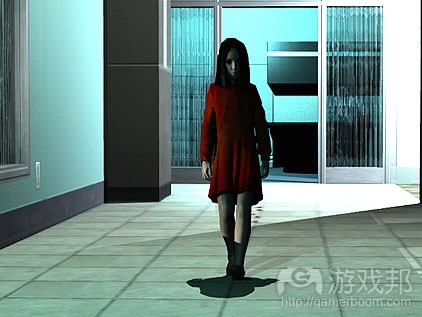
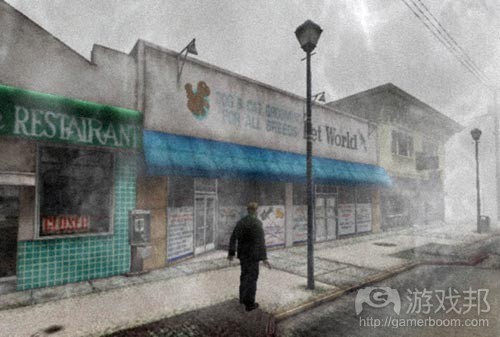
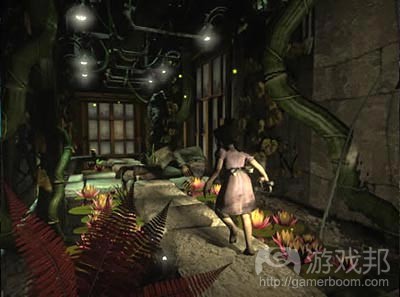
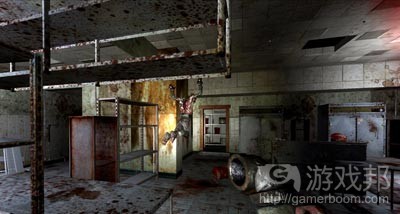
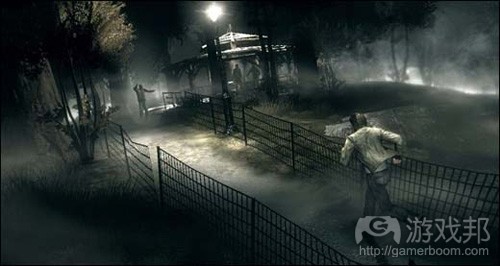


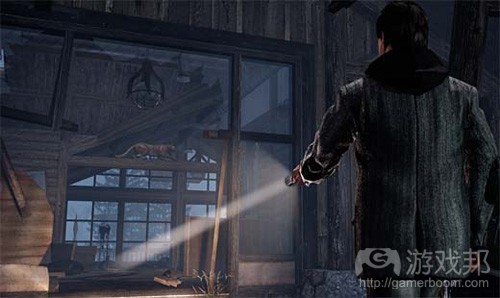
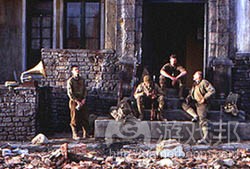














 闽公网安备35020302001549号
闽公网安备35020302001549号